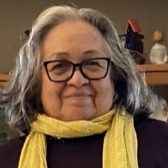
Have we truthfully and wholly begun to travel in two boats side by side as equals without the other trying to steer the other’s boat or canoe?
The oldest treaty, the two-row wampum belt, was a treaty between the Dutch and Haudenosaunee in the early 1600’s. The agreement between the nations was that they would travel through life together side by side. The intent of the treaties was to live as equals, nation to nation, as brothers and sisters, as ones who shared the richness of this land. Another treaty is the “Dish with One Spoon” wampum which all Indigenous nations were invited to join. This treaty specified how land can be shared to the mutual benefit of all its inhabitants. According to the Haudenosaunee, the treaty originated many hundreds of years before contact and contributed greatly to the creation of the “Great League of Peace” between the many Indigenous nations which inhabited Turtle Island at the time.
It is fairly clear, however, that the treaties that were made with the Crown have not honored the agreement to share land and its resources equally. The discrepancies between the settlers’ lifestyle and the impoverished conditions in which our people live is still visible throughout Canada. Many are still living without the basic necessities, such as clean drinking water and adequate housing.
Historically, our traditional ways were disparaged by many as being pagan and savage. This was what we were taught in school as children, and many of us learned to be ashamed of who we were. It was ingrained in us that the spiritual way of life which sustained our ancestors for tens of thousands of years before contact was inferior and should be rejected from our ways of being and knowing. For centuries, there was significant effort to convince our people to believe that everything our ancestors held sacred was to be thrown out the window as worthless and heathen. It has been a slow process turning this mindset around to a more, understanding, Christ-like way. I often wonder how life would have been different for us as Indigenous people if the early missionaries would have said, “Tell us about your God to whom you pray, and we will tell you about ours, and let us see what we can, together, figure out how things can be done.”
I believe we experienced a resurgence and gained strength as Indigenous people in 1970 when our leaders responded forcefully to Pierre Trudeau’s White Paper which sought to complete the ultimate goal of assimilation by dissolving the Indian Act and thus, all treaty rights. The chiefs and Elders gathered together and created their own paper which they titled ‘Wahbung: Our Tomorrows,’ which stood for a fundamental step towards self-determination of First Nations people. The eloquence and thought with which they responded to the White Paper instilled in us a sense of pride in our leadership. This helped open the door to allowing our people to live their way of life and we became stronger nations. The action of the chiefs, Elders, and leaders instilled a pride in our identities as peoples that we never before experienced.
Since the TRC report was released, there has been focus on the churches to work towards reconciliation. Granted, since 1993, when then-Primate Michael Peers officially apologized for the church’s role in residential schools, the Anglican Church moved even further towards improving relationships. There have been a series of steps towards self-determination in our ministries, including Canon 22, which was endorsed at the General Synod in 2010. This then led to the establishment of the Spiritual Ministry of Mishamikoweesh, a new diocese in the Anglican Church of Canada. This was approved by General Synod in 2013 and Reverend Lydia Mamakwa was installed as the first bishop in June of 2014. The appointment of a new National Anglican Indigenous Bishop was also a major step that was a long time coming and was welcomed by us.
The Gospel in the Centre of our Sacred Circle is a very important part of being who we are as Indigenous Anglican people, disciples of Christ Jesus. Any event or meeting is carried out with the Gospel in the centre.
It was with joy that I experienced the first Sacred Circle with my sister in Fort Qu’Appelle in 1988. I was not an official representative, but I was involved as an observer. It was called the Native Convocation then, but it was still a big step for Indigenous people, especially when Reverend Charles Arthurson was selected to be the first Indigenous bishop. The people who gathered there laid the groundwork for the Sacred Covenant, which I see as a living document, and is a guiding light on our continuing journey to self-determination and to being a living faith reality of the Gospel life in our communities. We have continued to work on this covenant which truly defines our unique role within the church.
I attended a gathering in Phoenix in 2008 with Episcopalians and Canadian Anglicans to discuss the church’s repudiation of the Doctrine of Discovery. General Synod officially sanctioned the repudiation in 2010. The Doctrine of Discovery was recognized as being fundamentally opposed to the gospel of Jesus Christ and the church’s understanding of the inherent rights that individuals and peoples have received from God.
The ninth Sacred Circle held at Prince George was my first official attendance and it was an extremely emotional time to see so many Indigenous people of diverse cultures and languages come together under the umbrella of the Anglican Church of Canada. To see so many ordained Indigenous people under one roof, enjoying time together, worshipping together and working together made me, a cradle Anglican, realize how far our relationship had progressed, and how we are learning to steer our Indigenous ministries’ ship.






